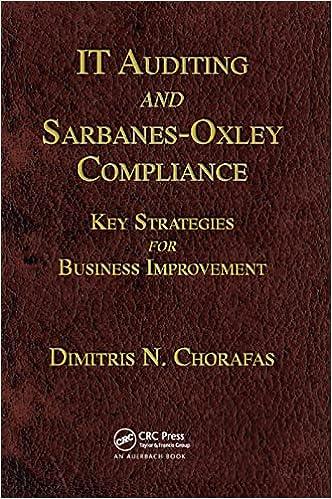48. How can an industrial company inflate the value of its inventory so as to reduce net income and the taxes is has to pay that year? 49. According to the valuation method based on tax shields, the value of the company (VI) is the value of the unleveraged company (Vu) plus the value of tax shields (VTS). Therefore, the higher the interest, the higher the VTS. So, does the value of the company increase if I call my bank and tell them to charge me double the interest? 50. I cannot seem to start a valuation. In order to calculate E+D= VA (FCF; WACC) I need the WACC and in order to calculate the WACC I need D and E. Where should I start? 51. Does the book value of the debt always coincide with its market value? 52. Is the Free Cash Flow (FCF) the sum of the equity cash flow and the debt cash flow? 53. What is NOPAT (Net Operating Profit After Tar)? 54. What is EBITDA (Earnings Before Interest, Tares, Depreciation and Amortization)? 55. I do not understand the meaning of Working Capital Requirements. I think it should be similar to Working Capital (Current Assets - Current Liabilities). Am I right? 56. Why cantwe not calculate the required return (Ke) from the Gordon-Shapiro model [P0=Div0(1+g)/(Keg)] instead of using the CAPM? As we know the current dividend (Divi) and the current share price (P0), we can obtain the growth rate of the dividend from the formula g=ROE(1p)/(1ROE(1p)), p being the payout. 57. Assume I calculate g as ROE(1p)/(1ROE(1p)) and the Ke from the CAPM. 1 replace both values in the formula PER = (ROE(1+g)g)/ROE(Keg) but the PER 1 obtain is totally different from the one 1 get by dividing the quotation of the share to the earnings per share. Is it possible to interpret that difference as an overvaluation or undervaluation of that share on the market? 58. I was assigned a valuation of the shares of a pharmaceutical laboratory. Which valuation method is more convenient? 48. How can an industrial company inflate the value of its inventory so as to reduce net income and the taxes is has to pay that year? 49. According to the valuation method based on tax shields, the value of the company (VI) is the value of the unleveraged company (Vu) plus the value of tax shields (VTS). Therefore, the higher the interest, the higher the VTS. So, does the value of the company increase if I call my bank and tell them to charge me double the interest? 50. I cannot seem to start a valuation. In order to calculate E+D= VA (FCF; WACC) I need the WACC and in order to calculate the WACC I need D and E. Where should I start? 51. Does the book value of the debt always coincide with its market value? 52. Is the Free Cash Flow (FCF) the sum of the equity cash flow and the debt cash flow? 53. What is NOPAT (Net Operating Profit After Tar)? 54. What is EBITDA (Earnings Before Interest, Tares, Depreciation and Amortization)? 55. I do not understand the meaning of Working Capital Requirements. I think it should be similar to Working Capital (Current Assets - Current Liabilities). Am I right? 56. Why cantwe not calculate the required return (Ke) from the Gordon-Shapiro model [P0=Div0(1+g)/(Keg)] instead of using the CAPM? As we know the current dividend (Divi) and the current share price (P0), we can obtain the growth rate of the dividend from the formula g=ROE(1p)/(1ROE(1p)), p being the payout. 57. Assume I calculate g as ROE(1p)/(1ROE(1p)) and the Ke from the CAPM. 1 replace both values in the formula PER = (ROE(1+g)g)/ROE(Keg) but the PER 1 obtain is totally different from the one 1 get by dividing the quotation of the share to the earnings per share. Is it possible to interpret that difference as an overvaluation or undervaluation of that share on the market? 58. I was assigned a valuation of the shares of a pharmaceutical laboratory. Which valuation method is more convenient







